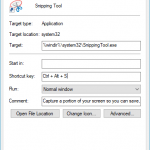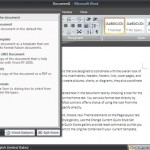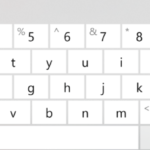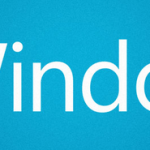Most of the keyboard shortcuts existed since Windows 3.1 and Windows 95 era, but some of them is new to Windows Vista too. In addition, most of the listed keyboard shortcuts could be in later Windows operating systems too, such as Windows 7, or even Windows 8, Windows 8.1 and Windows 10, though the later operating systems may seen even more keyboard shortcuts available.
Function Keys
| Shortcut Key | Function(s) |
| F1 | Start Help (supported in most applications). |
| F2 | Rename selected icon or file in Windows Explorer or on the Desktop. |
| F3 | Open Search (in Windows Explorer or on the Desktop only). |
| F4 | Open a drop-down list (supported in many dialog boxes). For example, press F4 in a File Open dialog to drop down the Look In list. |
| F5 | Refresh the view in Windows Explorer, on the Desktop, in the Registry Editor, and some other applications. |
| F6 | Move focus between panes in Windows Explorer. |
| F10 | Send focus to the current application’s menu. |
Miscellaneous Keys
| Shortcut Key | Function(s) |
| Arrow Keys | Basic navigation – move through menus, reposition the text cursor (insertion point), change the file selection, and so on. |
| Backspace | Move up one level in the folder hierarchy (Windows Explorer only). |
| Delete | Delete selected item(s) or selected text. |
| Down arrow | Open a drop-down listbox. |
| End | Go to end of line when editing text, or to the end of file list. |
| Enter | Activate highlighted choice in menu or dialog box, or insert a carriage return when editing text. |
| Esc | Close dialog box, message window, or menu without activating any choice (usually the same as clicking Cancel). |
| Home | Go to beginning of line (when editing text), or to the beginning of file list. |
| Page Down | Scroll down one screen. |
| Page Up | Scroll up one screen. |
| PrintScreen | Copy entire screen as a bitmap to the Clipboard. |
| Space Bar | Toggle a checkbox that is selected in a dialog box, activate the command button with the focus, or toggle the selection of files when selecting multiple files with Ctrl. |
| Tab | Move focus to next control in a dialog box or window (hold Shift to go backward). |
Alt Key Combinations
| Shortcut Key | Function(s) |
| Alt | Send focus to the menu (same as F10). Also turns on the menu in applications where it is no longer used by default, such as Windows Explorer and Internet Explorer. |
| Alt-x | Activate menu or dialog control, where letter x is underlined (if the underlines are not visible, pressing Alt will display them). |
| Alt-double-click (on icon) | Display Properties sheet. |
| Alt-Enter | Display Properties sheet for selected icon in Windows Explorer or on the Desktop. Also switches command prompt between windowed and full-screen display. |
| Alt-Esc | Drop active window to bottom of pile, which, in effect, activates next open window. |
| Alt-F4 | Close current window; if Taskbar or Desktop has the focus, exit Windows. |
| Alt-hyphen | Open the current document’s system menu in a multiple document interface (MDI) application. |
| Alt-numbers | When used with the numbers on the numeric keypad only, inserts special characters corresponding to their ASCII codes into many applications. For example, press the Alt key and type 0169 for the copyright symbol. Check characters map for full list of codes. |
| Alt-PrintScreen | Copy active window as a bitmap to the Clipboard. |
| Alt-Shift-Tab | Same as Alt-Tab, but in the opposite direction. |
| Alt-Space Bar | Open the current window’s system menu. |
| Alt-Tab | Switch to the next running applicationhold Alt while pressing Tab to cycle through running applications. |
| Alt-M | When the Taskbar has the focus, minimize all windows and move focus to the Desktop. |
| Alt-S | When the Taskbar has the focus, open the Start menu. |
Ctrl Key Combinations
| Shortcut Key | Function(s) |
| Ctrl-A | Select all; in Windows Explorer, selects all files in the current folder. In word processors, selects all text in the current document. |
| Ctrl-Alt-x | User-defined accelerator for a shortcut, in which x is any key. |
| Ctrl-Alt-Delete | Show the logon dialog when no user is currently logged on; otherwise, switch to the Windows Security dialog, which provides access to Task Manager and Log Off, as well as switching to another user, allowing you to change your password or lock the computer. Use Ctrl-Alt-Delete to access the Task Manager when Explorer crashes or your computer becomes unresponsive. |
| Ctrl-arrow key | Scroll without moving selection. |
| Ctrl-click | Use to select multiple, noncontiguous items in a list or in Windows Explorer. |
| Ctrl-drag | Copy a file. |
| Ctrl-End | Move to the end of a document (in many applications). |
| Ctrl-Esc | Open the Start menu; press Esc and then Tab to move focus to the Taskbar, or press Tab again to move focus to the Taskbar, and then cycle through the toolbars on the Taskbar every time you press Tab. |
| Ctrl-F4 | Close a document window in an MDI application. |
| Ctrl-F6 | Switch between multiple documents in an MDI application. Similar to Ctrl-Tab; hold Shift to go in reverse. |
| Ctrl-Home | Move to the beginning of a document (in many applications). |
| Ctrl-Space Bar | Select or deselect multiple, noncontiguous items in a listbox or in Windows Explorer. |
| Ctrl-Tab | Switch among tabs in a tabbed dialog or Internet Explorer; hold Shift to go in reverse. |
| Ctrl-C | Copy the selected item or selected text to the Clipboard. Also interrupts some command prompt applications. |
| Ctrl-F | Open Search (in Windows Explorer or on the Desktop only). |
| Ctrl-V | Paste the contents of the Clipboard. |
| Ctrl-X | Cut the selected item or selected text to the Clipboard. |
| Ctrl-Z | Undo; for example, erases text just entered, and repeals the last file operation in Windows Explorer. |
Shift Key Combinations
| Shortcut Key | Function(s) |
| Shift | While inserting a CD, hold to disable AutoPlay. |
| Shift-arrow keys | Select text or select multiple items in a listbox or in Windows Explorer. |
| Shift-click | Select all items between currently selected item and item on which you’re clicking; also works when selecting text. |
| Shift-click Close button | Close current folder and all parent folders (Windows Explorer in single-folder view only). |
| Shift-Alt-Tab | Same as Alt-Tab, but in reverse. |
| Shift-Ctrl-Tab | Same as Ctrl-Tab, but in reverse. |
| Shift-Ctrl-Esc | Open the Task Manager. |
| Shift-Delete | Delete a file without putting it in the Recycle Bin. |
| Shift-double-click | Open folder in two-pane Explorer view. |
| Shift-Tab | Same as Tab, but in reverse. |
Windows Logo Key (WIN) Combinations
| Shortcut Key | Function(s) |
| WIN | Open the Start menu. |
| WIN-Tab | If the Aero interface is active, this activates Windows Flip 3D. |
| WIN-Pause/Break | Display System Control Panel applet. |
| WIN-Space bar | Display the Sidebar. |
| WIN-D | Minimize all windows and move focus to Desktop. |
| WIN-E | Start Windows Explorer. |
| WIN-F | Launch Search. |
| Ctrl-WIN-F | Search for a computer on your network (requires Active Directory). |
| WIN-L | Lock computer, requiring password to regain access. |
| WIN-M | Minimize current window. |
| Shift-WIN-M | Undo minimize current window. |
| WIN-R | Display Run dialog. |
| WIN-U | Open the Ease of Access Center. |
Keyboard Accelerators by Function
Space Bar
Checkbox, toggle on or off
Ctrl-C
Clipboard, copy
Alt-PrintScreen
Clipboard, copy current window as a bitmap
PrintScreen
Clipboard, copy entire screen as a bitmap
Ctrl-X
Clipboard, cut
Ctrl-V
Clipboard, paste
Ctrl-F4
Close current document
Alt-F4
Close current window
Esc
Close dialog box, message window, or menu
Space bar
Command button, click
Shift-F10, or context menu key on some keyboards
Context menu, open
Tab (hold Shift to go in reverse)
Controls cycle focus on a dialog box
Ctrl-C
Copy selected item or selected text to the Clipboard
Ctrl-X
Cut selected item or selected text to the Clipboard
Windows Logo Key-B, Space bar
Puts you in the notification area (Windows Logo Key-cool, then reveals hidden icons (Space bar)
Shift-Delete or Shift-drag item to Recycle Bin
Delete a file without putting it in the Recycle Bin
Delete
Delete selected item
Ctrl-Esc (or Windows Logo Key), then Esc, Tab, Tab, Tab
Desktop, activate
Windows Logo Key-D, or click empty portion of Taskbar and press Alt-M
Desktop, activate by minimizing all windows
Tab (hold Shift to go in reverse)
Dialog box, cycle through controls
Ctrl-Tab (hold Shift to go in reverse)
Dialog box, cycle through tabs
Ctrl-F4
Document, close
Ctrl-Home
Document, move to the beginning
Ctrl-End
Document, move to the end
Ctrl-F6 or Ctrl-Tab
Document, switch between
Down Arrow or F4
Drop-down listbox, open
Alt-F4
Exit an application
Ctrl-Esc, then Alt-F4
Exit Windows
Shift-Delete
File, delete without moving to Recycle Bin
Windows Logo Key-F (or F3 or Ctrl-F in Windows Explorer or on the Desktop)
File, search
Ctrl-Windows Logo Key-F
Find a computer on your network
Windows Logo Key-F (or F3 or Ctrl-F in Windows Explorer or on the Desktop)
Find files or folders
Tab (hold Shift to go in reverse)
Focus, move between controls on a dialog box
Shift-click Close button
Folder, close current and all parents (Windows Explorer in single-folder view only)
Right and left arrows
Folder, expand and collapse folders in tree
Shift-double-click
Folder, open in two-pane Explorer view
Windows Logo Key-F (or F3 or Ctrl-F in Windows Explorer or on the Desktop)
Folder, search
F1
Help (in most applications)
Down arrow or F4
Listbox, drop-down
Ctrl-click
Listbox, select multiple items
Ctrl-Space bar
Listbox, select or deselect items
Windows Logo Key-L (or press Ctrl-Alt-Delete and then Space bar)
Lock computer
Alt-x if menu doesn’t have focus, x by itself if menu has focus
Menu, activate specific item with letter x underlined
Arrow keys
Menu, basic navigation
Esc
Menu, close
F10 or Alt (by itself)
Menu, move focus to
Shift-F10, or context menu key on some keyboards
Menu, open context menu
Windows Logo Key-D, or click empty portion of Taskbar and press Alt-M
Minimize all windows and move focus to Desktop
Windows Logo Key-M (hold Shift to undo)
Minimize current window
F6
Panes, move focus between
Backspace
Parent folder, move to (in Windows Explorer)
Ctrl-V
Paste the contents of the Clipboard
Alt-double-click, or select and then press Alt-Enter
Properties, display for an icon
F5
Refresh (in Windows Explorer, on the Desktop, and some other applications)
F2
Rename selected icon or file in Windows Explorer or on the Desktop
Windows Logo Key-R
Run
Alt-PrintScreen
Screenshot, copy current window as a bitmap to the Clipboard
PrintScreen
Screenshot, copy entire screen as a bitmap to the Clipboard
Page Down
Scroll down one screen
Page Up
Scroll up one screen
Ctrl-arrow key
Scroll without moving selection
Windows Logo Key-F
Search for files or folders
F3 or Ctrl-F
Search for files or folders (in Windows Explorer or on the Desktop only)
Ctrl-A
Select all
Alt-drag file
Shortcut, create
Windows Logo Key or Ctrl-Esc
Start menu, open
Alt-Tab or Ctrl-Esc (hold Shift to go in reverse)
Switch to next application
Ctrl-F6 or Ctrl-Tab (hold Shift to go in reverse)
Switch to next document window
Alt-hyphen
System menu, show for current document
Alt-Space bar
System menu, show for current window
Windows Logo Key-Pause/Break
System Properties, open
Ctrl-Tab (hold Shift to go in reverse)
Tabs, switch between tabs
Shift-Ctrl-Esc (or press Ctrl-Alt-Delete and click Task Manager)
Task Manager, open
Ctrl-Esc, then Alt-Enter
Taskbar and Start Menu Properties, open
Windows Logo Key-Tab
Launches Flip 3D
Ctrl-Z
Undo
Alt-Tab (hold Shift to go in reverse)
Window, activate next
Alt-F4
Window, close
Alt-Esc
Window, drop to bottom of pile
Windows Logo Key-M (hold Shift to undo)
Window, minimize
Windows Logo Key-D (hold Shift to undo)
Window, minimize all
Alt-Tab (hold Shift to go in reverse)
Window, switch to
Windows Logo Key-E
Windows Explorer, open
F6
Windows Explorer, switch between panes
There is also keyboard shortcuts for DOS prompt.







